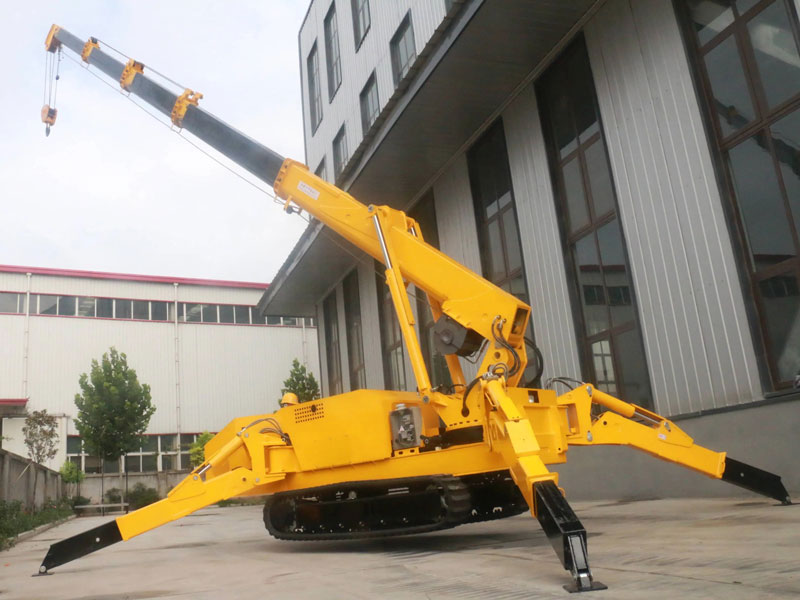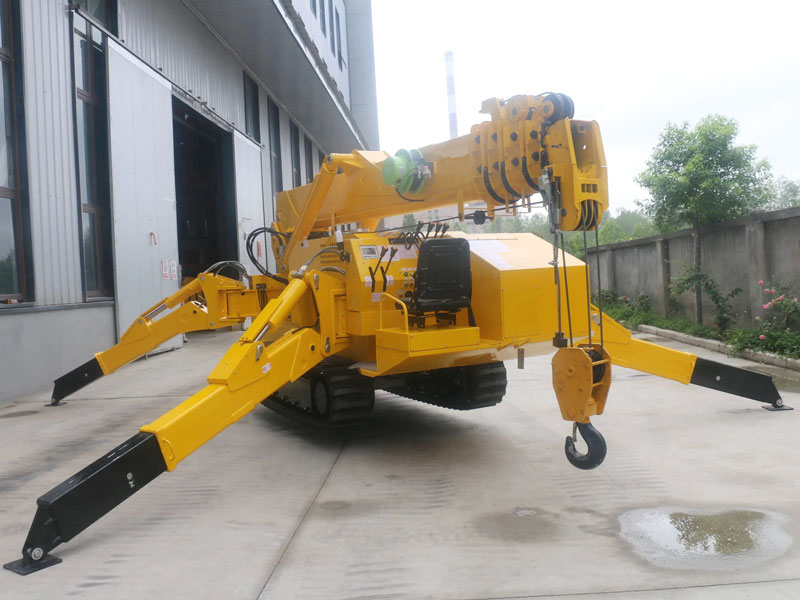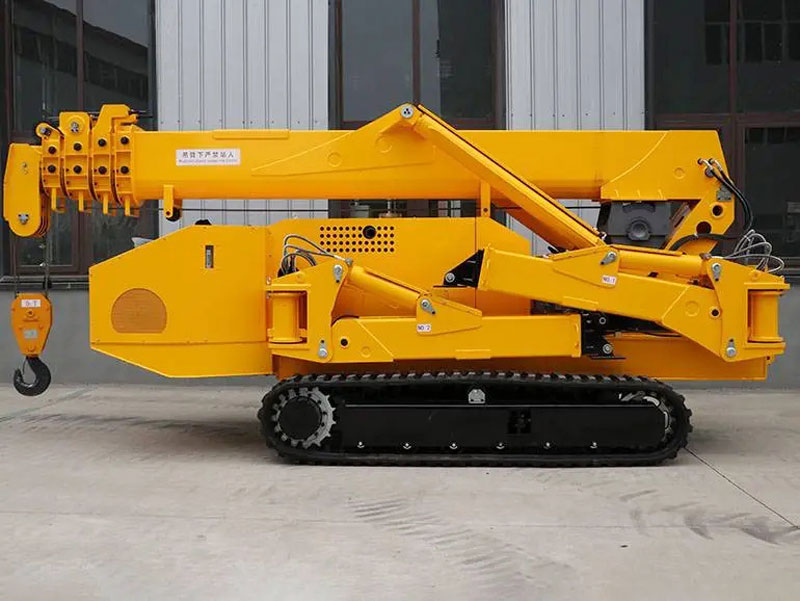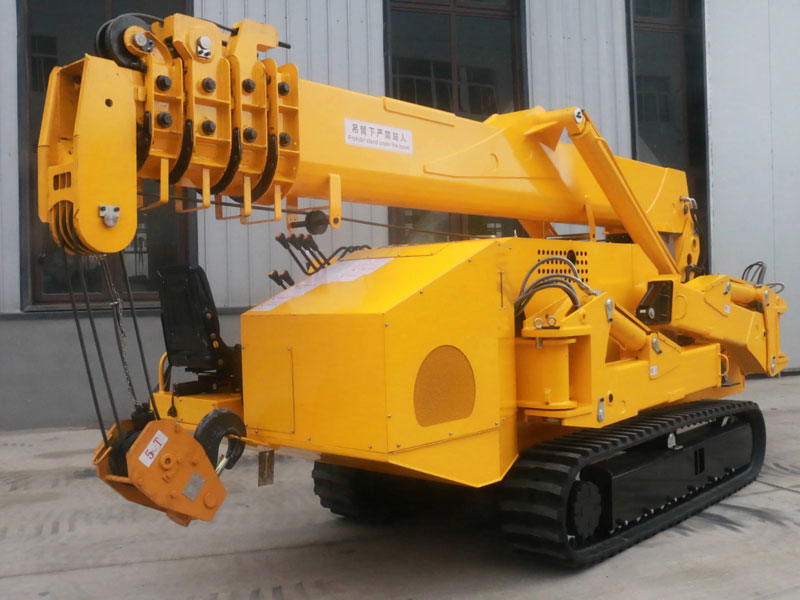Crawler spider cranes, also known as mini crawler cranes or compact cranes, are versatile lifting machines commonly used in construction, manufacturing, and other industries. While specific designs may vary among different manufacturers, here are the typical components you can find in a spider crane:


Counterweight: To maintain stability and prevent tipping, spider cranes may be equipped with a counterweight system. Counterweights are typically located near the base of the crane and are used to balance the weight of the load being lifted.
Outriggers: Spider cranes are equipped with outriggers, which are extendable legs that provide additional stability by increasing the crane’s footprint. The outriggers are deployed to create a wide and stable base, especially when lifting heavy loads.
Power Source: Spider cranes can be powered by various sources, such as diesel engines, electric motors, or battery packs. The power source drives the hydraulic system responsible for operating the crane’s functions.
Hydraulic System: Spider cranes rely on hydraulic systems to control the movement of the boom, jib, outriggers, and other functions. Hydraulic cylinders, pumps, valves, and hoses are key components of the hydraulic system.
Safety Features: Spider cranes often incorporate safety features, including load moment indicators, overload protection systems, emergency stop buttons, and alarms. These features help ensure safe operation and prevent accidents.

The working principle of crawler spider cranes involves the utilization of hydraulic systems to control the movement and lifting capabilities of the crane. Here’s a general overview of how spider cranes operate:
Stabilization: Before lifting any load, spider cranes need to establish stability. This is accomplished by extending the outriggers, which are the extendable legs located near the base of the crane. The outriggers create a wide and stable footprint, ensuring that the crane remains balanced during lifting operations.
Power Source: Spider cranes are powered by various sources, such as diesel engines, electric motors, or battery packs. The power source provides energy to drive the hydraulic system responsible for operating the crane’s functions.
Hydraulic System: Hydraulic systems play a crucial role in the operation of spider cranes. They use fluid pressure to control the movements of the crane’s components. The hydraulic system consists of hydraulic cylinders, pumps, valves, and hoses.
Lifting Mechanism: The lifting mechanism of a spider crane primarily involves the boom and jib. The boom is the main lifting arm and is often telescopic, allowing it to extend and retract. The jib, if present, is an additional extension attached to the end of the boom, providing extra reach and flexibility.
Controls: Spider cranes are operated using control systems that enable the operator to manipulate the crane’s movements. The controls may include joysticks, buttons, or levers that activate the hydraulic system. By operating the controls, the operator can extend or retract the boom, raise or lower the load, and perform other necessary movements.
Load Attachment: The load to be lifted is typically attached to a hook block, which is connected to the crane’s lifting mechanism. The hook block may have multiple sheaves, allowing for the use of slings, chains, or other lifting devices.

By utilizing the hydraulic system, controls, and safety features, spider cranes provide a compact and versatile solution for lifting and maneuvering loads in restricted spaces or challenging environments. It’s important to note that different spider crane models may have additional or specialized components based on their intended applications and manufacturers’ designs.
